
|
|
ERITREA
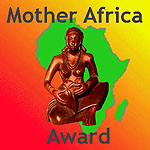
|
|
|
|

|
|
|
Official Name
|
Ertra
|
|
Located
|
Mid East: Sudan, Ethiopia
|
|
Capital
|
Asmara
|
|
Head of State |
President Isayas Afewerki
|
|
Area
|
124,000 sq km
|
|
Population
|
3.8 million
|
|
Growth rate
|
2.2%
|
|
Languages
|
Arabic, Tigrinya, Afar, Bilen & Kunama
|
|
Currency
|
Eritrean Nakfa
|
|
GNP per capita
|
$120
|
|
Inflation
|
11%
|
Airlines
(advertise here)
|
from Europe: ________________
from Asia: ________________
from USA: ________________
|
Hotels
(advertise here)
|
Names & Rates per night
______________________
______________________
|
|
USAfrica Agent
|
______________________
|
|
Country Advertiser
|
If you want to become
the Country Advertiser
your logo comes here.
|
|

İ2002: Tourist Office
|
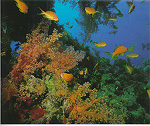
İ2002: Tourist Office
|
|
|
The people around the capital Asmara (the central highlands) are mainly Tigrinya-speaking Christians and outside the highlands they are mainly Muslim. Monday livestock market in Keren is famous in the region. Eritrea has some of Red Seas best and most unspoiled beaches. The Italian-built railway neglected during the war, again curls its way up from Massawa on the coast to 2128m before dropping to Asmara with its 30 tunnels and 65 bridges as volunteers, making it a symbol of self-reliance, repair it.
|
Economy:
|
Eritrea is Africas newest country, formed in 1993. The spirit of self-reliance has been the force behind massive highway construction and rural regeneration programs, including the planting of over a million tree seedlings. The economic outlook is promising because of sound management and relatively diversified production in agriculture, manufacturing, and services. The Government sees the private sector as the primary engine of growth and has sought to create an effective enabling environment for business.
|
|

Highlands
İ2002: Tourist Office
|

İ1960-2002: Tourist Office
|
|
History:
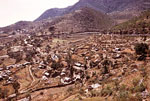
İ1988-2002: Africa Focus
|
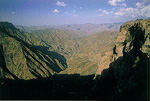
İ2002: Tourist Office
|
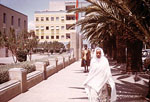
Asmara
İ1988-2002: Africa Focus
|
|
|
Eritrea did not exist as a distinct region until 1869 when the Italians occupied it. The territory that is now Eritrea had belonged to the ancient but discontinuous Abyssinian Empire since its legendary beginning in the 10th century BC. Some of its coast had been occupied by various Muslim forces since the 7th century until the Italians gained a foothold in 1869 and finally occupied all of it as an agricultural colony at the end of the last century. The Italians built roads, railways, ports and plantations but also schools and hospitals. Mussolini invaded Ethiopia from Eritrea in 1936 but was defeated by the Allies in 1941.
By May 1941 British forces occupied Eritrea, and after WWII, Eritrea remained under British military administration. A commission was sent to Eritrea in 1947 to report on the wishes of the population. Its report was inconclusive. The case was then referred to the UN, which sent a Commission in 1950. Its recommendation was divided between federation and independence. The UN voted in 1950 for Eritrea's federation with Ethiopia, with local autonomy to Eritrea. Ethiopia later annexed Eritrea in 1962 and it became their 14th province. The Arab, Italian and British influences and a greater degree of development of Eritrea caused difficult relations with larger but more backward Ethiopia. The annexation of Eritrea by the Abyssinian Emperor Haile Selassie brought on a civil war that was to last 30 years before Eritrea was freed. Eritrean liberation movements fought this.
|
In 1961 the Eritrean Liberation Front was formed and by 1977, it had become the main liberation movement in Eritrea. In February 1991 they began Operation Tewodros, in conjunction with the Ethiopian People's Revolutionary Democratic Front to gain independence. In May 1991, the EPLF took control of all Eritrea as the Ethiopian regime collapsed and the EPRDF entered Addis Ababa. The EPLF formed a provisional government in Eritrea. Eritrea gained independence in 1993 following a referendum which allowed its secession from Ethiopia. Relations between Eritrea and Ethiopia had been stable since independence. However, a breach in those relations occurred in May of 1998 when a border conflict erupted into a full-scale war with air strikes on civilian targets in both countries. After nearly two years of fighting, Eritrea and Ethiopia signed a cessation of hostilities agreement in June 2000. The Organisation of African Unity is working on peace proposals with both sides but fighting broke out again in February 1999, and also in 2000
Enabling us to improve the quality of the content, if you have additional information, remarks or suggestions, please share it with us by e-mail.
Last update: 24 April 2008
|











